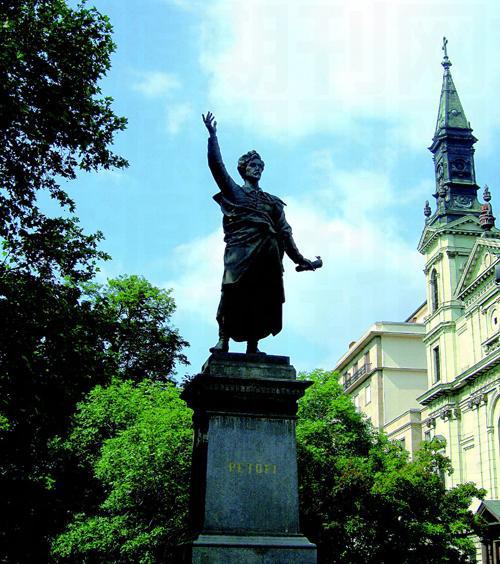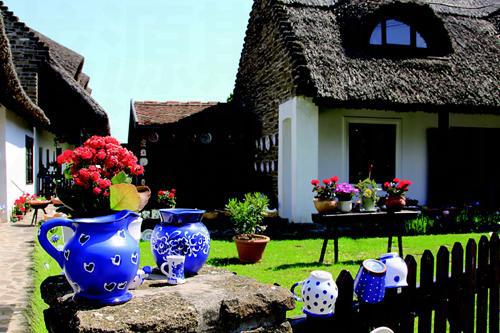Zhejiang Photographers’ Visit to Hungary
2009-06-08ByZengWeiyang
By Zeng Weiyang


“Impressions of Zhejiang” was held in commemoration of the 60th anniversary of the founding of diplomatic ties between China and Hungary in Hungary in May, 2009. It was a photograph exhibition, jointly sponsored by Zhejiang Peoples Association for Friendship with Foreign Countries, Zhejiang Federation of Literary and Art Circles, and Hungary-China Friendship Association. As a member of the Zhejiang Photographers Delegation, I spent a week in Hungary and was deeply impressed by what I saw there.
60 photographs
The sixty exhibits from Zhejiang were a choice selection of photographs by Zhejiang photographers. Defining Zhejiang in various ways, the photos displayed thoughtful themes, related stories and oozed irresistible charms. While setting up the exhibits, the Hungarian colleagues commented admiringly on the beauty of Zhejiang seen in the pictures. The exhibition pulled in large crowds of local residents. They observed that the photos changed their outdated views of Zhejiang and gave them an urge to visit China and Zhejiang in particular. Liu Guoping, the head of our delegation, commented: “Photography is a universal language and carrier of images. These photographs describe the best of Zhejiang and we believe they will certainly resonate with those who believe in beauty.
Some Impressions of Budapest
Budapest, the capital of Hungary, also serves as a cultural crux of East Europe.Buildings in downtown, representing different architectural styles, different times and eras, coexist in harmony. Ancient roofs and a little bit stained walls indicate as if time stopped here. Even a vegetable market in downtown looks like a museum steeped in history, its walls decorated with religious figures. For the purpose of protecting old-time architectural wonders, Budapest has seen no big infrastructure projects over the past 50 years and will see no such projects in the next 50 years.
As a moderately developed country, Hungarys middle class accounts for the overwhelming majority of its population whereas the super-rich and the ultra-poor are tiny. The olive-shaped society structure is said to contribute a great deal to the stability the country now enjoys. We saw no houses in urban and rural areas equipped with anti-theft windows. We were amazed to see that Budapest has a lot of automobiles and not so many pedestrians. We learned that there were more than one million automobiles in the capital for a population of 2 million. In urban areas, the most eye-catching view is cars parked neatly along the streets. Cars in Hungary are just transport vehicles; they are not status symbols. The old Budapest does not have many parking lots. Streets that radiate out from downtown double as parking places.
A commanding view from the top of Castle Hill in Buda thrilled me a great deal. The Parliament and the Royal Palace glowed in splendor. Budapest was a beautiful city. In sunshine, red roofs and green treetops stretched away under an azure sky.
Bridges on Danube River
Another huge attraction in Budapest is Danube, which zigzags through more than ten European countries. Probably enthralled by the Blue Danube which I had heard so many times, I had cherished a yearning for Danube long before seeing it for the first time in Hungary. When I actually soaked in the splendor of the river, I could not help but compare it with rivers I know intimately back home: the Qiantang River in Hangzhou, the Huangpu River in Shanghai, and the Oujiang River in Wenzhou. What I saw convinces me that the Blue Danube deserves its finest reputation. I could almost feel the rivers enchanting beauty characterized by the exuberant and limpid waters and the shipshape wharfs. It is said that the river owes its cleanness to the coordinated endeavors of the river countries where no pollution is allowed to be discharged into the river.
The magnificent bridges in Budapest are like artworks on the Danube. The Chain Bridge is the most ancient and most spectacular. Not far upstream from the Chain Bridge is Elizabeth Bridge, whose cables and pylons and whitish structure look in pleasant contrast with the green Chain Bridge. Margaret Bridge, named after a Hungarian princess who sacrificed the possibility of getting married in the interest of her nation, is the widest bridge in the city. It is the only bridge that accesses Margaret Island in the river.
A Quiet Country
Though we did not stay long in Hungary, we traveled a lot to do sightseeing and take photographs. After a few days of traveling on the wheels, a colleague commented that he hadnt heard much of honking. We all agreed that we hadnt heard much of honking. The country is very quiet.Though cars are everywhere, drivers are courteous even in traffic jams. They wait for green light and they let pedestrians cross streets first.
We were deeply impressed by the friendly Hungarians. We ran into a group of primary school pupils in Esztergom, a city in northern Hungary, about 50 km north-west of the capital Budapest. After recognizing us, they chanted, “China! Chinese!” They beamed in front of our cameras. We frequently heard “Ni Hao!” on streets and in hotels. We saw a lot of smiling faces. We were touched by such good manners. Zhejiang has seen prosperity in recent years thanks to the successful modernization drive over the past thirty years and our everyday life and our cities may seem quite prosperous, but we have a lot to learn from these people in their courtesy.
Zhejiang People in Hungary
Zhejiang people in Hungary received the delegation most warm-heartedly. I was surprised to find Hungary has so many people from Zhejiang. Incomplete data indicates that there are about 4,000 to 5,000 people from Qingtian County, Zhejiang living in Hungary and about 1,000 people from Wenzhou, Zhejiang living in Hungary. They are everywhere in Hungary, most engaged in restaurant and trade business. Most of them came in the early 1990s when China and Hungary approved mutual visa-free access for their citizens.
Ye Shenxiong, now a successful businessman in Hungary, had been away from his hometown in Zhejiang for nearly twenty years. After seeing the photos at the exhibition, he commented that the delegations visit to Hungary testified to the huge progress Zhejiang has made and the capability Zhejiang has of reaching out to the outside world. He observed that the Zhejiang people now enjoy more benefits in overseas communities thanks to the development back home in China. A man from Qingtian County shouted with excitement and joy when he pointed out the location of his house in a picture which offered a panoramic view of the county capital of Qingtian.
During the short stay in Hungary, we photographers from Zhejiang took more than a thousand pictures. These pictures tell stories about the photograph exhibition of “Impressions of Zhejiang”, the beautiful Hungary where we traveled, the sculptures in Hungarian cities we saw, and the friendly Hungarian people we encountered.
